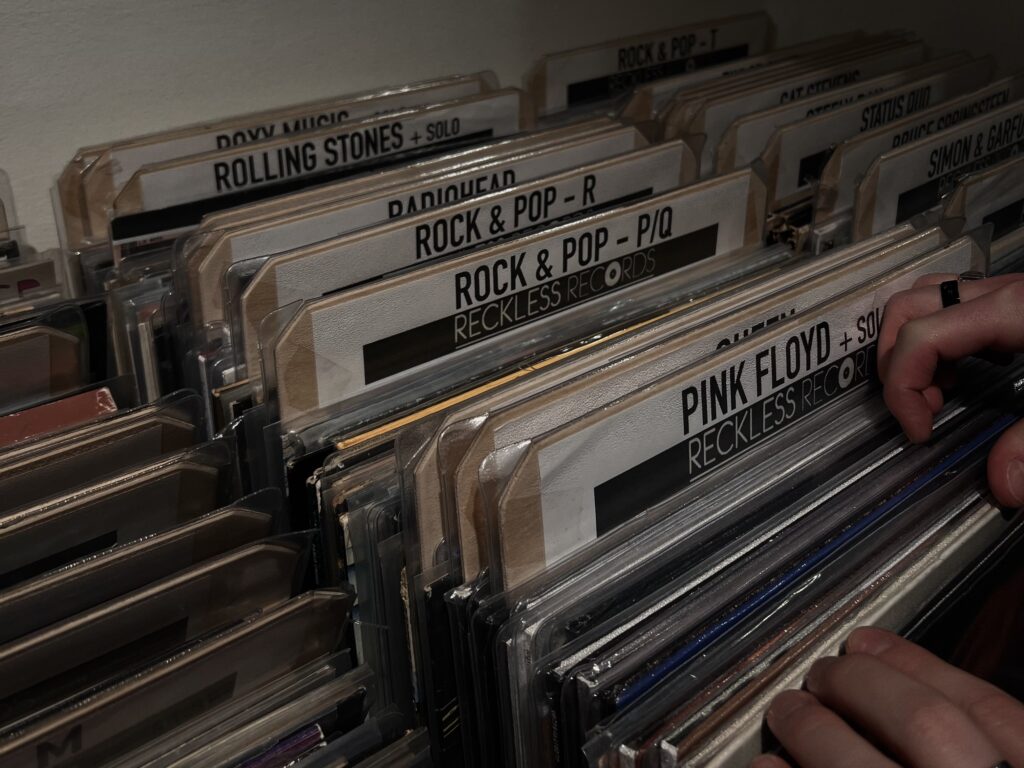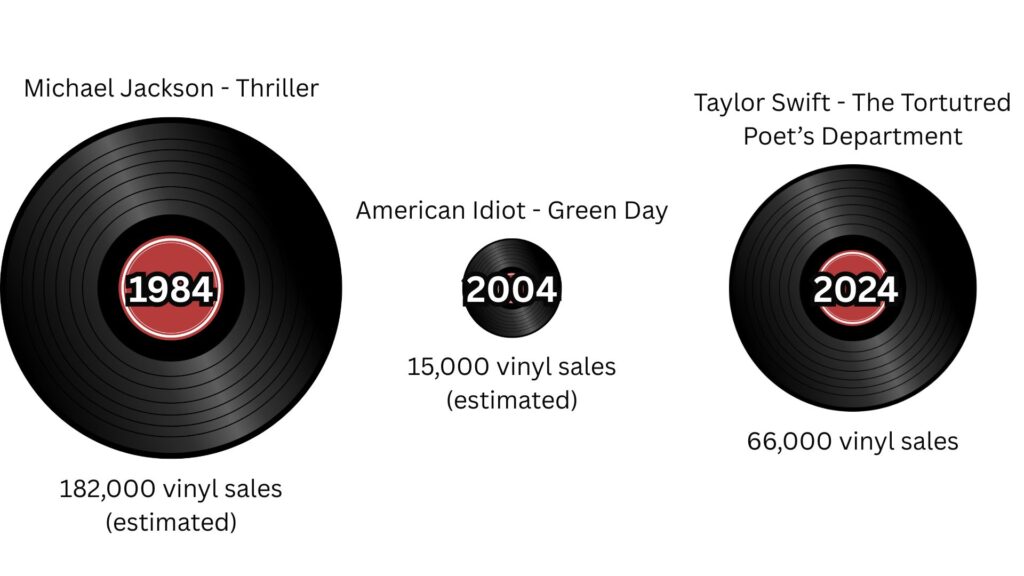For the majority of the 20th century, vinyl records reigned supreme in the music world as they were one of the only widely available music formats. However, the craze for vinyl records slowly dwindled as its competition rose to fame throughout the late 20th and early 21st century.

From the 1970s and 80s came the cassette tape and the CD. They were highly praised for their compact nature and ability to skip to specific songs. They are also portable – a game-changer for avid music listeners – and a lot cheaper than your standard vinyl record. Adjusted for inflation, the average vinyl record price in the 1980’s was £25, whilst the average CD price was £13.
Digital streaming was legitimately introduced in Europe and the UK in 2004 by iTunes, reaching 6.1 million users in its first year. By December 2005, this figure had grown to 20.7 million, and it started to seem as though vinyl records were completely wiped out. At this point, vinyl records represented a mere 0.2% of the total sales revenue across all recorded music formats that year.
However, 2007 was a monumental year for the music industry: vinyl record sales started increasing for the first time in over 10 years, much to everyone’s surprise. Now, almost two decades later, this trend is still showing no signs of stopping nor slowing down.
But what is causing this unexpected renaissance of vinyl records in the current digital age of music?
1. Record Store Day
Record Store Day, taking place one Saturday every April, is a celebration of vinyl records and was introduced as a way to specifically support independent record stores.
In the run up to Record Store Day, participating indie record stores will receive a range of exclusive and limited vinyl records from a wide variety of mainstream, and more niche artists.
Record Store Day is a hugely popular event amongst vinyl record collectors and, last year, contributed to the highest number of vinyl record sales in one week with a total of 306,791 – an unbroken record for 30 years prior to this.
As well as this, vinyl record sales have increased considerably for their 17th consecutive year, which aligns with Record Store Day first being introduced in 2007.
2. Digital Burnout
Despite living in a predominantly digital age where online streaming is the most popular method of listening to music, another factor that has contributed to the rise in vinyl record sales in the last decade, is digital burnout.
Mark Hoynes, production manager at the vinyl manufacturer Disc Manufacturing Services, explains that, although they are a very digitally-focused generation, “18-24-year-olds are the driving force behind the current boom in sales”. He continues, record collectors are “looking for a tactile experience that music streaming can’t offer them”.
Eli Stephenson, 21, has been collecting vinyl records for almost an entire decade. He believes that, “the feeling of putting the needle down onto the record is just something you can’t beat by pressing play on a phone”.
3. Nostalgia/Aesthetics
Stephenson suggests that the sound quality of vinyl records on a good system is better than any other music streaming format. He says, “any pops, crackles, or imperfections just add to the experience”.
The return of vinyl coincides with the return of other iconic pieces from earlier generations such as film cameras, typewriters, cassette tapes, and vintage clothing. Younger generations are full of curiosity, and older generations are able to tap into memories they forgot they had.
4. Collectability
In response to fans’ increasing obsession with rare vinyl records with unique characteristics, vinyl manufacturing companies have started offering vinyl records variations including different colours, shaped discs, and picture disc pressings.
Similarly, artists have responded in the same vain by promoting exclusive vinyl records with unique cover art, alternative track lists, as well as hand numbered and signed albums.
Hoynes explains that a lot of music fans in this current era understand that, “the best way to support their favourite artist is to pick up a physical copy”. He recommends that all artists consider a special vinyl record variant when promoting a new album as, “it’s a great way to grow your fans and community”.
However, some passionate vinyl record collectors think the same way as Stephenson, who worries that, “it’s a cash grab attempt”. He stresses that it encourages people to start collecting records for the wrong reasons, “that being to keep them wrapped up to re-sell”.

What does vinyl records’ increase in popularity mean?
Vinyl records’ return to mainstream music is beneficial for the business of pressing plants and record stores, as well as allowing artists to embrace their creativity and reminding everyone of how good the medium truly is.
On the other hand, it introduces a level of competition. Large chain businesses often commercialise records by inflating their prices which pushes independent stores, who have been in the market for decades, out of the industry.
This further stresses the importance of events such as Record Store Day, that are dedicated to supporting indie record stores and businesses. It comes as no surprise that these events increase in popularity year in and year out.
Over in Newcastle, the home of Record Store Day 2025’s ambassador Sam Fender, independent record stores, including Reflex, saw their most successful year to date. Some fans of the event even began queuing as early as 08:00pm the night before the event.
